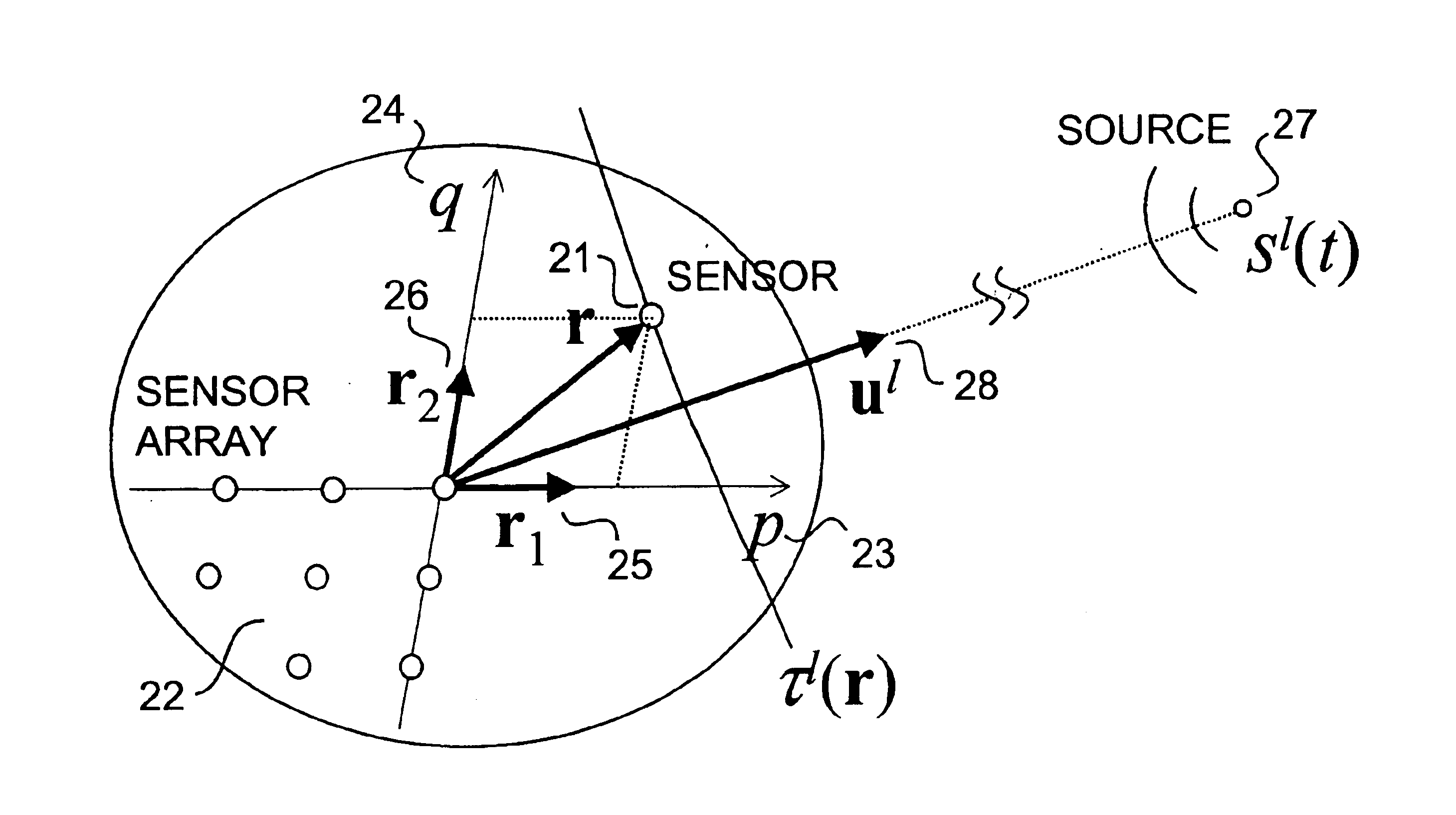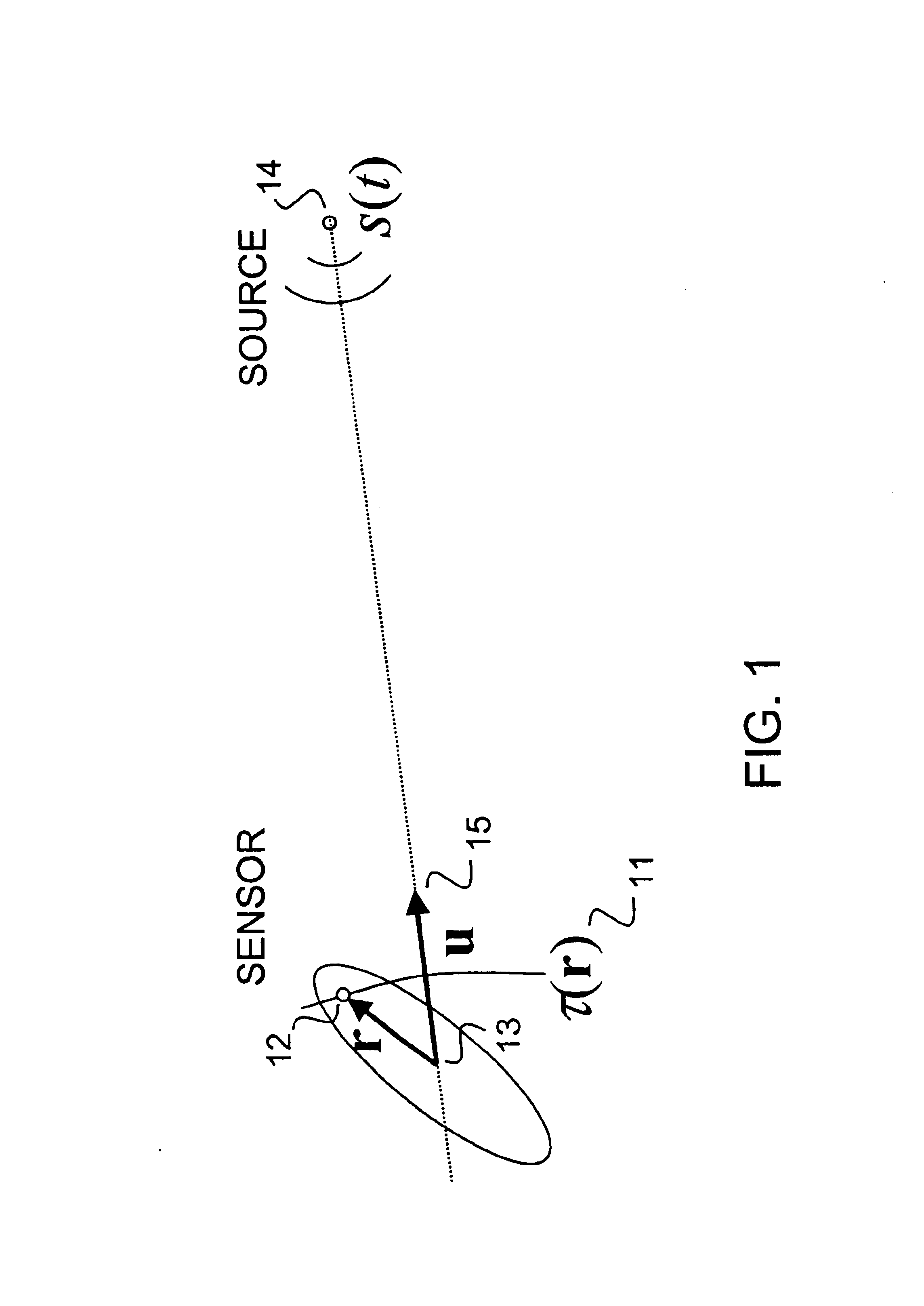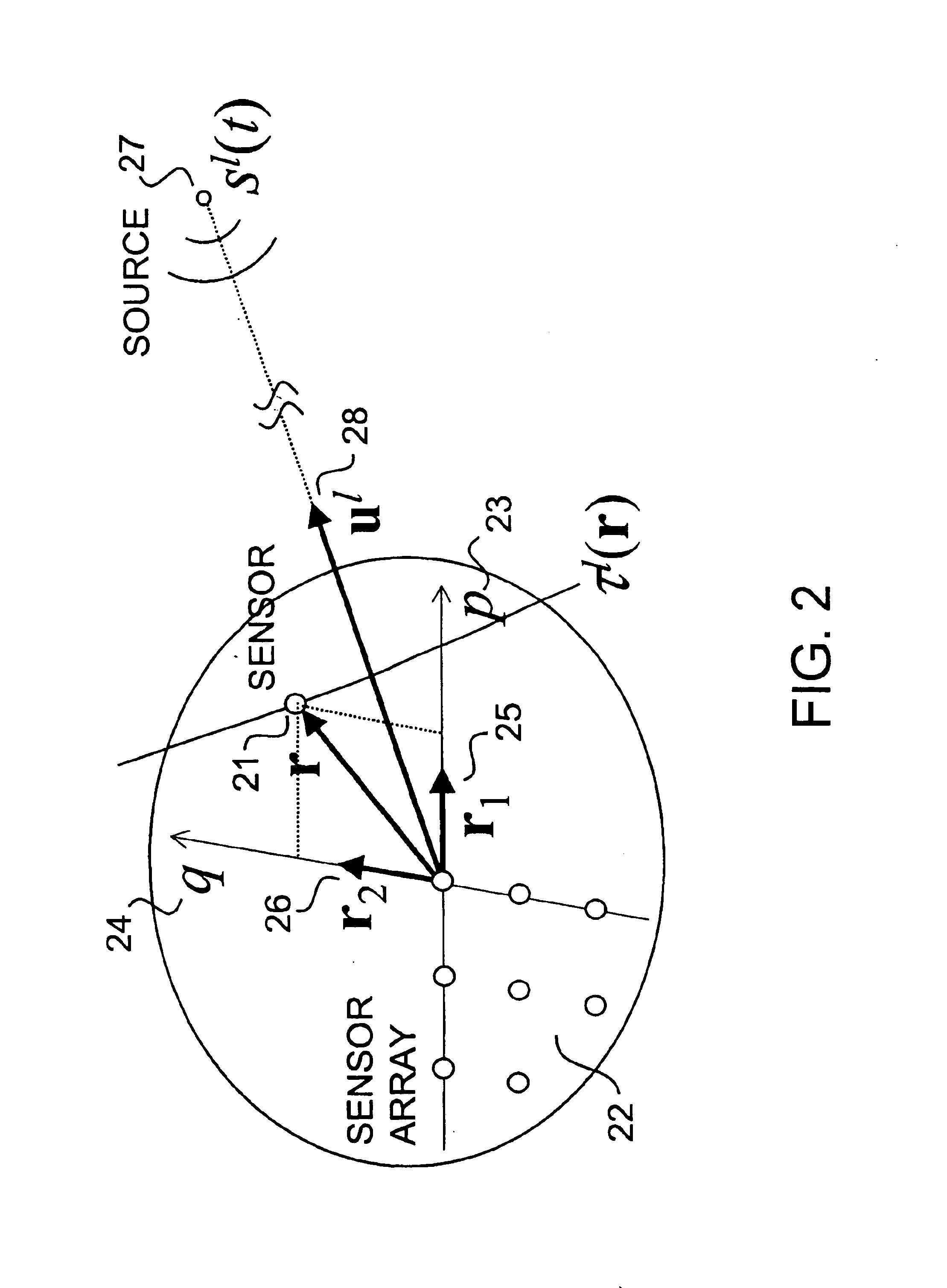Method for gradient flow source localization and signal separation
a signal separation and gradient flow technology, applied in speed/acceleration/shock measurement, instruments, surveying and navigation, etc., can solve the problems of large number of parameters, and little knowledge about the problem of localizing and separating multiple broadband sources
- Summary
- Abstract
- Description
- Claims
- Application Information
AI Technical Summary
Benefits of technology
Problems solved by technology
Method used
Image
Examples
Embodiment Construction
We consider linear mixtures of traveling waves emitted by sources at various locations, and observed over a distribution of sensors in space. The distribution of sensors could be continuous or discrete. In what follows we assume an array of discrete sensors, but the theory applies as well to sensors distributed continuously in space. However, the sources are assumed to be discrete.
The usual approach of the prior art to wideband separation tries to find the sources by combining the received signals at multiple delayed times. This is computationally expensive. The present approach proposed here reduces the problem of separating mixtures of delayed sources to that of separating an instantaneous mixture of signals related to the sources through a succession of time derivatives of increasing order.
Let the coordinate system r be centered in the array so that the origin coincides with the “center of mass” of the sensor distribution. Referring to the geometry in FIG. 1, we define τ(r) 11 as...
PUM
 Login to View More
Login to View More Abstract
Description
Claims
Application Information
 Login to View More
Login to View More - R&D
- Intellectual Property
- Life Sciences
- Materials
- Tech Scout
- Unparalleled Data Quality
- Higher Quality Content
- 60% Fewer Hallucinations
Browse by: Latest US Patents, China's latest patents, Technical Efficacy Thesaurus, Application Domain, Technology Topic, Popular Technical Reports.
© 2025 PatSnap. All rights reserved.Legal|Privacy policy|Modern Slavery Act Transparency Statement|Sitemap|About US| Contact US: help@patsnap.com



